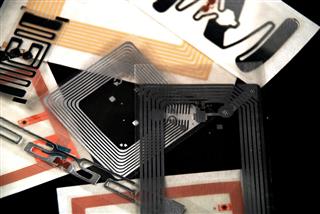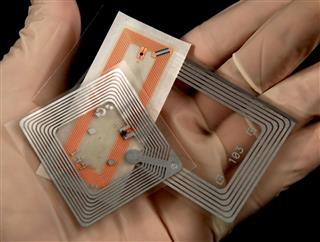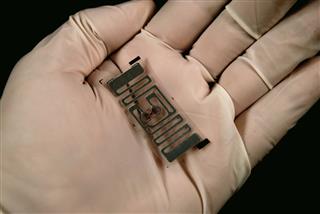
RFID technology is increasingly being used in applications where access controls and data collection activities come into picture. Every technology has its advantages and disadvantages, and the same is true for this technology as well. Read on to know more about the pros and cons of RFID.
RFID (Radio Frequency Identification) is a subcategory of the Automatic Identification and Data Collection (AIDC) technologies. Bar code technology has been preferred for data collection activities and is one of the fastest developed technologies. However, it has a few limitations. Nonetheless, these can be easily dealt with using the RFID technology. This technology was first used during the Second World War for tracking enemy aircraft by the Allied Forces. It is an emerging technology which has not captured the commercial market yet, like the bar code system.
Components of RFID
RFID Tag
RFID tags are usually known as transponders, and act as a transmitters as well as a receivers in the system. The three basic components of the tag are an antenna, a microchip (memory), and the encapsulating material. There are three types of tags as given below:
Read-only Tag: In the read-only tag, the information is written only once during the manufacturing process. The information along with the serial number on the read-only tag can never be altered.
Read-Write Tag: In the read-write tag, only the serial number is written during the manufacturing process, which cannot be altered. However, the blocks of information can be rewritten by the user.
Write Once Read Many: In this tag, the serial number is written only once and cannot be rewritten. However, it can be read multiple times.
RFID reader
It is the device used to transmit and receive information from the RFID tag. It is also referred to as an ‘interrogator’. It includes sensors that are capable of reading the tags in the vicinity.
Supporting Infrastructure
The supporting infrastructure includes related software and hardware required for RFID systems. The software manages the interaction between the reader and the tags.
Applications
- Personnel identification
- Livestock identification and tracking
- Electronic toll connection
- Cargo and container identification
- Patient identification and medication
Pros
1. RFID tags are rugged and robust. It can work at extreme temperatures and harsh environment. This system works at a remarkably high speed, even in adverse conditions.
2. The tags are available in different shapes, sizes, types, and materials. The information on the read-only tag cannot be altered or duplicated. Read-write tags can be used repeatedly. The RFID tags always read without any error.
3. Direct physical contact between the tags and the reader is not required for the system to work. Radio frequency (RF) technology is used for communication using RFID.
4. Multiple tags can be read at the same time. The tags can be read in a bulk of 10 to 100 tags at a time. Reading is automatic and involves no labor.
5. RFID systems can identify and track unique items, unlike the bar code system which identifies only the manufacturer and the product type.
6. The entire system is very reliable which allows the use of RFID tags for security purpose.
7. The storage capacity of the RFID tags is greater than any other automatic identification and tracking system.
Cons
1. The main disadvantage is the high cost involved in this technology. The RFID system is costlier as compared to other automatic identification systems. The cost can increase further, if the system is designed for a specific/custom application.
2. Size and weight of the tags is more than that of the bar code system. The electronic components like antenna, memory, and other parts of the tags makes this device bulky.
3. Although the tags work in harsh environment, the signals from certain types of tags get affected when they come in close contact with metals or liquids. Reading such tags becomes difficult, and sometimes the data read is erroneous.
4. There is no way in which damaged tags can be tracked and replaced by tags that are intact.
5. Although the tags do not require line-of-sight communication, they can be read within a specified range only.
The RFID technology has several advantages and is highly flexible. Its applications keep on changing and so does the standard. The unexploited potential of RFID systems was predicted in its early stages, and it is now becoming the frontrunner in automatic identification and data collection technologies.


















